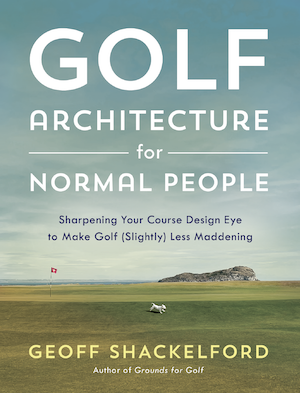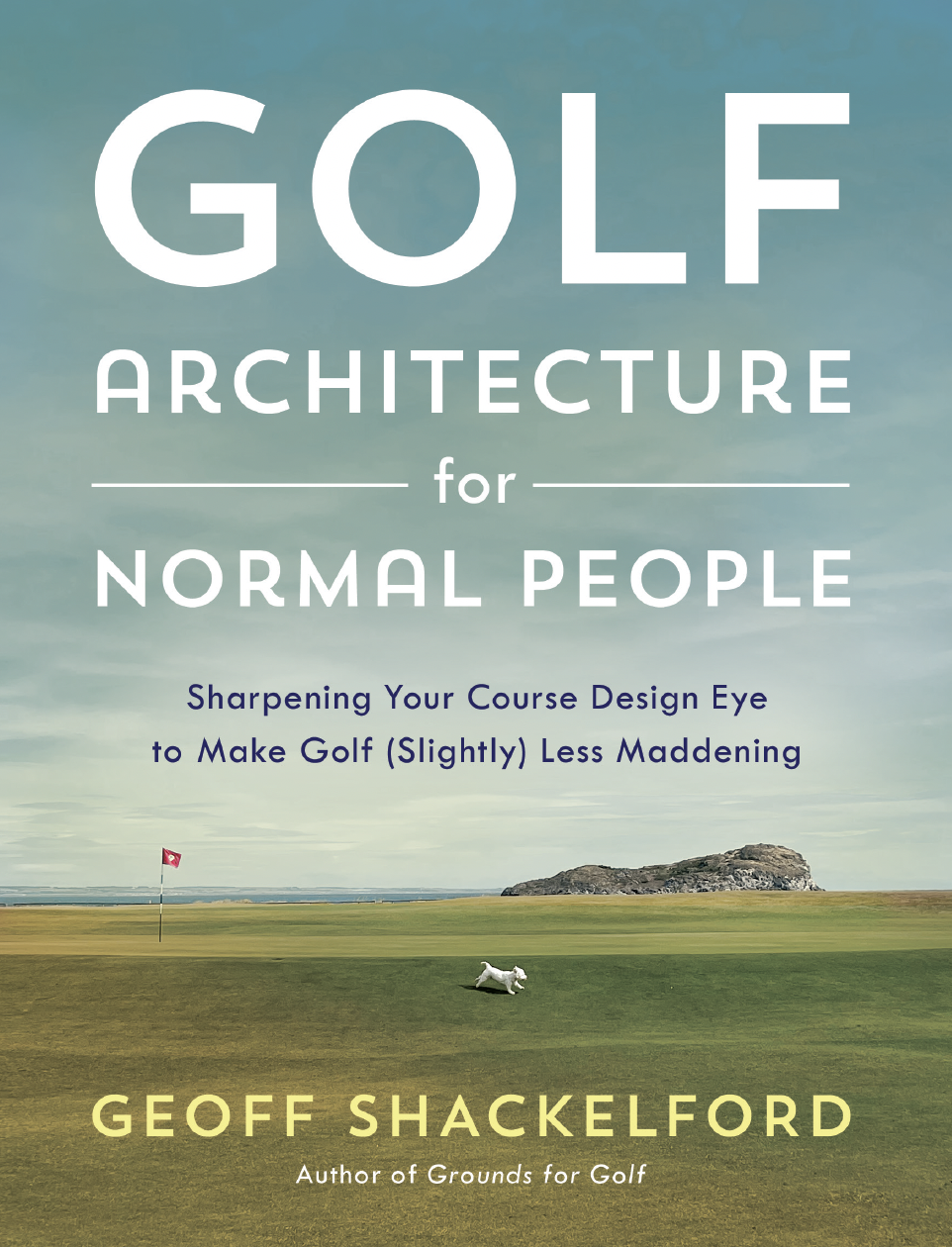The USGA and R&A issued an embargoed statement summarizing their Distance Insights Study and handed it out to select folks, who then shared it all over the place. The shoe shine guy at Dulles probably has a copy by now.
Here is my summary of the Distance Insights Study “conclusions”: the report features the strongest language in the sport’s history regarding the state of affairs as the governing bodies see distance. While not an all-out admission of regulatory malfeasance, the report opens the door for bifurcation of the rules via a local rule that would open the door to different equipment. While that idea is not the least bit original, it has been resisted by the organizations until now.
The report also delivers lines about distance such as how it must be “brought to an end” and how the governing bodies intend to “break the cycle”. There is even an early reading of 2002’s Joint Statement of Principles” to confirm that the line has been crossed as suggested in that document. There is a sound synopsis put forward explaining why the sport has been harmed in recent years by a distance pursuit and why a continued effort will do no one any good.
Certainly it’s a far cry from the old “nothing much to see here” stance.
The bad news?
Now we spend the next year under a review.
Until the full summary and report is made available online, here are the highlights from the 15-page document, starting with the bold “brought to an end” line.
In summary, we believe that golf will best thrive over the next decades and beyond if this continuing cycle of ever-increasing hitting distances and golf course lengths is brought to an end. Longer distances, longer courses, playing from longer tees and longer times to play are taking golf in the wrong direction and are not necessary to make golf challenging, enjoyable or sustainable in the future.
Again, not newsworthy to a portion of the population who knew this long ago, but a stunning reversal for these organizations. As is this, the most newsworthy component and only about 30 years overdue.
1. We will assess the potential use of a Local Rule option that would specify use of clubs and/or balls intended to result in shorter hitting distances. The concept is that equipment meeting a particular set of reduced-distance specifications – for example, a ball that does not travel as far or a club that will not hit a ball as far – might be a defined subset of the overall category of conforming equipment. This could allow committees that conduct golf competitions or oversee individual courses to choose, by Local Rule authorized under the Rules of Golf, whether and when to require that such equipment be used. Such a Local Rule option could be available for use at all levels of play, and golfers playing outside of a competition could also have the option to make this choice for themselves.
There also will a new look at the Overall Distance Standard.
2. We will also review the overall conformance specifications for both clubs and balls, including specifications that both directly and indirectly affect hitting distances. The intended purpose of this review is to consider whether any existing specifications should be adjusted or any new specifications should be created to help mitigate the continuing distance increases. It is not currently intended to consider revising the overall specifications in a way that would produce substantial reductions in hitting distances at all levels of the game.
Here’s the timeline on action that will excite no one except outside counsel for the manufacturers:
This paper provides notice to equipment manufacturers of this overall area of interest under the Equipment Rulemaking Procedures. This means that we are identifying research topics that have the potential to lead to an Equipment Rule change but that no proposals are being made today. We invite input from manufacturers and other stakeholders in the golf community concerning potential equipment-based options to help achieve the objectives identified above. To facilitate that input, within 45 days we will publish a more specific set of research topics. It is anticipated that this important step of gathering input will take at least 9-12 months. After the research is completed and comments are evaluated, if we then decide to propose any rule changes, manufacturers will receive notice of these proposed changes (including a proposed implementation plan) and an opportunity to comment under the Equipment Rulemaking Procedures. The time allotted for this step in the process leading up to a final decision on any proposed rule change would depend on the nature of the proposal.
Waste of time. The remedies have been decided, even the shoe shine guy at Dulles knows that. Let’s just get to the whining and litigation stage now.
I’m reluctant to copy, paste and comment on the narrative surrounding golf courses and the “altered skill challenge” artfully presented in the paper. But this was profound and speaks to the shift toward a power game, discriminating against those with less power but other skills.
The unifying principle is that success should depend on a golfer’s skill and judgment in choosing among 14 different clubs for tee shots, long and short approach shots, bunker shots, pitching, chipping, putting and a wide variety of recovery shots. This involves many elements of skill, such as hitting distance, distance control, accuracy, shape of shot, trajectory, spin, bounce and roll, and how to play from all types of lies. The player needs to use his or her imagination and judgment in making constant strategic choices about which type of shot to play among many options that differ in style, difficulty and risk/reward potential. Being challenged to display this wide range of skills is part of golf’s essential character, giving players of very different sets of abilities and relative strengths and weaknesses a chance to compete and succeed.
As for courses, this was a noteworthy paragraph:
Increasing distance can ultimately have a serious effect on where golf is played in elite male competitions, and the game is already seeing this begin to play out. It is unfortunate that courses that once held the highest-level competitions are no longer doing so because they are not considered long enough. More pressing for the future, many more of the most renowned golf courses around the world face a similar risk because it may not be practical for them to get much longer. Such courses may try to retain their challenge by adjusting other course conditions, but this can only go so far given a course’s nature and design integrity and, in any event, such changes eventually can still be outmatched by increasing hitting distance.
Line left out of this but I’M SURE MADE THE FULL REPORT: and we were the primary drivers of the idea to make those poor courses add all that length.
This was a more subtle point about how the yardage of a course may impact the bottom line, or even viability of some courses. Not a point the governing bodies would normally be expected to make, but it’s an important one for everyday courses and clubs.
For a course of, say, 6000 to 6500 yards, the issue is not about hosting elite male events, but about potentially losing the ability to attract and keep golfers who may come to perceive the course as too short from the longest tees. Even if not widely known or used for premier tournaments, such courses can be highly valued by local golfers and communities and are at risk from increasing hitting distances.
Distance is relative, and somewhere Dr. MacKenzie is cussing under his breath…
The game’s essential character and test of skill do not depend on the absolute length of a golf shot or a golf course; the relative relationship between hitting distance and hole length is what matters most. Continuing increases in overall hitting distances will not make golf a better game as a whole. For example, while it is remarkable that long-drive competitors can hit a ball as much as 400+ yards, golf would not be a better sport if anything close to that became a norm for play or if course lengths increased to match it. Similarly, the fact that male golfers on average can hit the ball farther than female golfers does not make the game of golf played by men inherently better than the game played by women.
This concept of relative distance has broader implications for the non-elite game.
Here’s the “break the cycle” language that’ll have ‘em raging in some parts.
For all the reasons stated above, we believe that it is time to break the cycle of increasingly longer hitting distances and golf courses and to work to build a long-term future that reinforces golf’s essential challenge and enhances the viability of both existing courses and courses yet to be built. In reaching this conclusion, we recognize that some have the view that the governing bodies might have done more in addressing the implications of the continuing increases in hitting distances and course lengths.
Yep, there is that.
There are always uncertainties about the future, and an inherent part of our role is to incorporate the lessons of experience, continue to monitor and assess ongoing developments, and develop consensus on issues that should be addressed.
Whew, scared me there for a minute. Thought they might say we screwed the pooch. Oh well, wrap it up…
Our views have evolved as events have unfolded and new information has become available, just as they may evolve in the future, and we believe that it is never too late to do the right thing for the future of the game. By stepping back to take this long-term view in the Distance Insights Project, we believe that we are in position to address this set of issues from all perspectives and to search for effective long-term solutions.
Let the whining about possible lost distance begin!
























